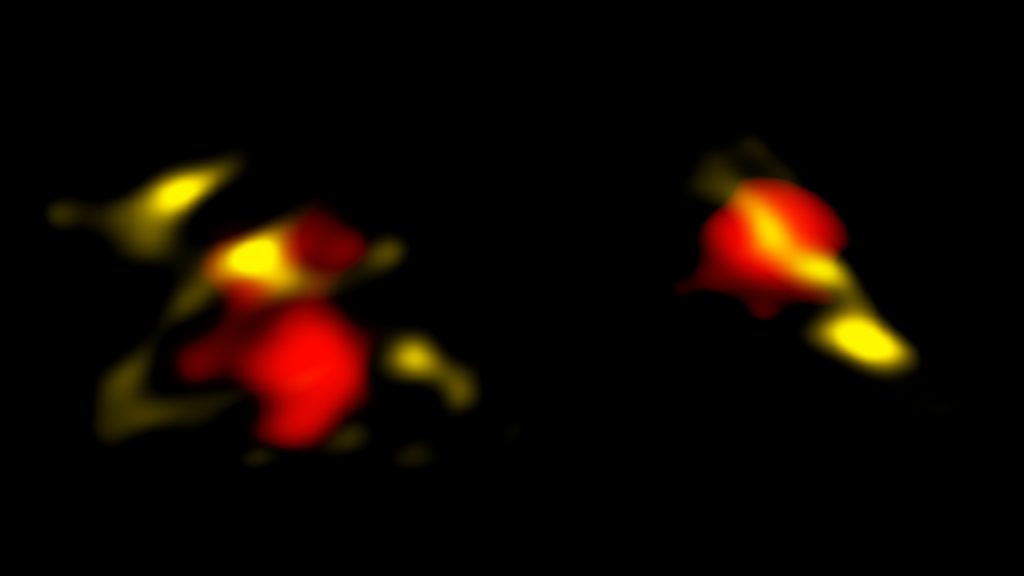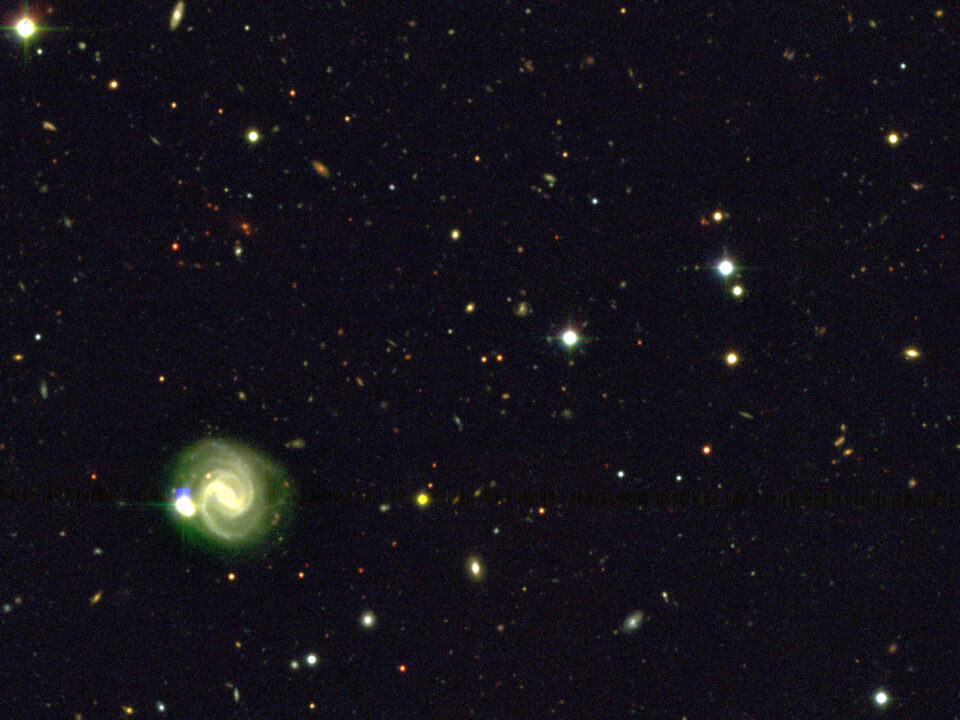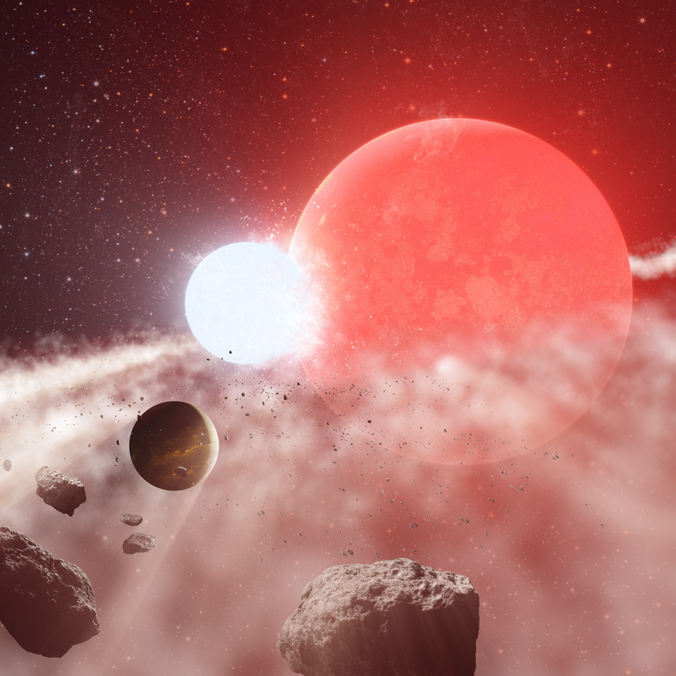Galaxies in the Infant Universe were Surprisingly Mature

Anemic Star Cluster Breaks Metal-Poor Record
October 21, 2020
Observing Clusters of Galaxies Collide
November 17, 2020These are two of the galaxies in the early universe that ALMA observed in radio waves. The galaxies are considered more “mature” than “primordial” because they contain large amounts of dust (yellow). ALMA also revealed the gas (red), which is used to measure the obscured star-formation and motions in the galaxies. Credit: B. Saxton NRAO/AUI/NSF, ALMA (ESO/NAOJ/NRAO), ALPINE team
An international team of astronomers have performed the largest survey of distant galaxies in the early universe ever conducted. This survey (nicknamed ALPINE) aimed at measuring the gas and dust in over 100 distant galaxies located over 12 billion light years away from Earth, and involved the use of two Maunakea Observatories — W. M. Keck Observatory and Subaru Telescope. The results of this survey suggested that these distant galaxies were already much more mature in the early universe than previously expected. Galaxies are considered more “mature” when they contain a significant amount of dust and heavy elements (defined by astronomers as all elements heavier than hydrogen and helium), which are the by-products of dying stars. As galaxies in the early universe have not had much time to build stars yet, astronomers expect them to contain only low amounts of dust and heavy elements. Therefore, these newly discovered mature galaxies likely experienced a surprising “growth spurt” about a billion years after the Big Bang. Surveys like this one, which take a look back into the early universe, provide astronomers with a deeper understanding of how the galaxies that we see today are formed.
Read more, in the W.M. Keck Observatory and Subaru Telescope press releases.




